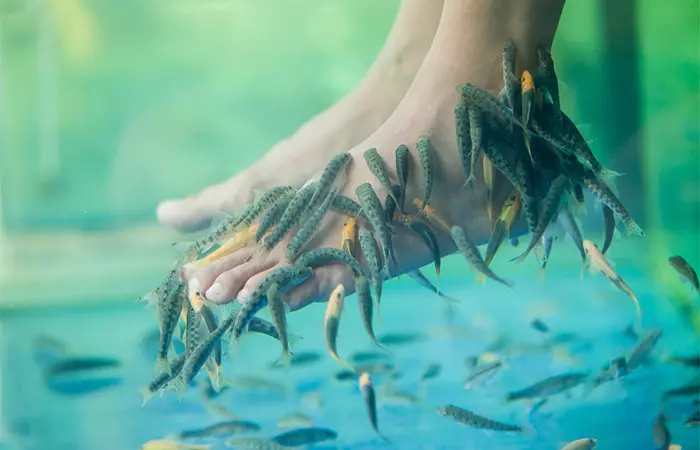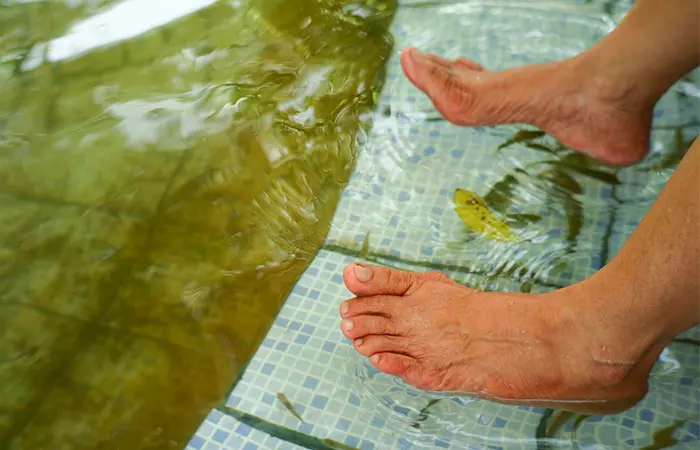What Is Fish Pedicure?
The fish pedicure or fish spa involves soaking the customer’s feet in a small water tank with nearly 30 to 100 pieces of tiny Garra Rufa fish, also known as the doctor fish or nibble fish. They eat away the dead skin of your feet, revealing soft and smoother skin. They nibble away the rough, flaky skin of the toes, leaving the feet gently exfoliated. This biotherapy provides a soothing massage and a calming sensation while the fish nibble and scrape away the dead skin. A fish spa treatment might run anywhere from 15 to 30 minutes.
Benefits Of Fish Pedicure
It gently exfoliates your skin by eliminating dead and dry skin cells. Your rough, uneven feet feel soft, smooth, and healthy. It helps soothe eczema and psoriasis (2), (3). It can reduce itchiness, blemishes, dark spots, and scars on the feet. It is a terrific stress reliever. It induces a mild massage sensation that is incredibly calming. It can minimize the appearance of calluses and warts.
A blogger spoke about her fish pedicure experience in her blog. She said, “Were my feet silky smooth with no hard skin? Well no, there is a difference with some softer areas, and my cuticles are tidier, but there is still far too much hard skin (i).” Although a fish spa feels great on the skin, it has certain safety concerns. Here are some risks associated with fish pedicures.
Safety Concerns
1. Hygiene
The water used in the fish tank is not usually replaced regularly. Many people sharing the same tank can only make things worse, and you have to compromise with hygiene and cleanliness. As a result of this, infections may spread easily, particularly if you have an open wound or bruises.
2. Fish Swap
Doctor fish resemble another fish species, Chinchin, which has teeth and bites. So, if your spa personnel mistakenly choose the wrong species for your basin, you may get bitten, leaving you vulnerable to infections.
3. Possibility Of Disease Transmission
The biggest risk is the transmission of diseases like hepatitis Ci An infection caused by the hepatitis C virus that causes inflammation in the liver, and may damage it completely. . Pathogenic bacteria can transmit from one person to another through the Garra rufa fish and spread the condition. Customers with open sores and cuts, chronic medical disorders like diabetes, or immune conditions like HIV and AIDS are more susceptible to contract infections through fish pedicures. Do fish pedicures actually work? Yes, fish pedicures remove dead skin and reduce itchiness and the appearance of calluses. However, the fish tanks are not replaced regularly and may increase the risk of infection (5). So think carefully and exercise caution before you opt for this. Where did fish pedicure originate? Fish pedicures are said to have originated in Turkey and are quite popular across various Southeast Asian and Middle Eastern countries today. Are fish pedicures cruel? Yes, the Garra rufa fish are starved so that they can eat the dead skin during the pedicure. Additionally, they come with a lot of health risks. That is why fish pedicures are banned in many US states and some parts of Canada. Experience the unique sensation of a fish pedicure with this video! Click on it to watch as tiny fish nibble away at the feet, leaving them feeling soft and smooth.









